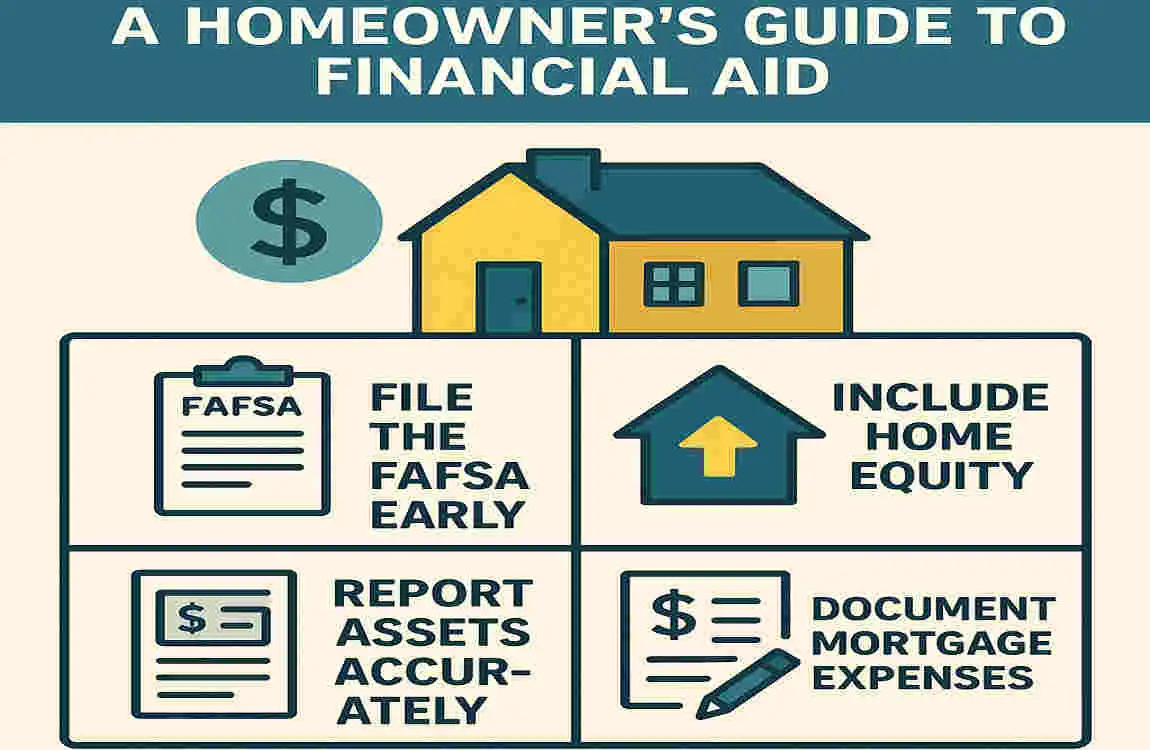Navigating college expenses can be a daunting task for students and families alike. Among tuition, books, and transportation, housing costs often represent the most significant financial burden. This raises a common question: Does FAFSA cover housing costs?
What is FAFSA?

To understand how FAFSA helps with housing, it’s crucial first to grasp what FAFSA is and how it works.
The Basics of FAFSA
FAFSA stands for the Free Application for Federal Student Aid. It’s a government program that determines a student’s eligibility for financial aid to help cover the costs of higher education. By completing the FAFSA form, students can access various types of financial assistance, including:
- Grants (free money that doesn’t need to be repaid).
- Federal student loans (money you borrow and must repay with interest).
- Work-study programs (part-time jobs to earn money while attending school).
The FAFSA process evaluates a student’s financial situation to calculate their Expected Family Contribution (EFC) and determine their aid eligibility.
FAFSA and Cost of Attendance (COA)
One key element of FAFSA is its connection to the Cost of Attendance (COA). The COA is the total estimated cost of attending a particular college, including:
- Tuition and fees.
- Books and supplies.
- Transportation.
- Room and board (housing and meals).
This means that FAFSA doesn’t just help with tuition—it also includes housing as part of the broader financial aid package.
Understanding Cost of Attendance and Housing
What Makes Up the Cost of Attendance?
The COA is a comprehensive estimate of the cost of attending college for one academic year. Housing costs, often referred to as “room and board,” are a significant component of this estimate. Here’s how COA is typically broken down:
Cost Component Description
Tuition and Fees: The cost of attending classes and accessing university services.
Room and Board Housing (on-campus or off-campus rent) and meal plans.
Books and Supplies Textbooks, lab materials, and other academic necessities.
Transportation Travel expenses to and from school (commuting costs or flights).
Personal Expenses Miscellaneous costs such as laundry, toiletries, and entertainment.
Housing costs are a significant portion of the COA, and FAFSA considers them when calculating a student’s financial aid eligibility.
On-Campus vs. Off-Campus Housing
When it comes to housing, students typically have two options:
- On-campus housing: Dormitories or other school-provided housing, often bundled with a meal plan.
- Off-campus housing: Renting an apartment or house near the college.
Both options come with their own costs, and FAFSA can help cover them. Let’s dive deeper into how FAFSA addresses housing needs.
How FAFSA Covers Housing Costs

Financial Aid Packages Include Housing Support
When a student completes the FAFSA, the financial aid package they receive will include funding to cover their COA, which includes housing costs. This aid typically comes in the form of:
- Grants, such as the Pell Grant, can be used for living expenses.
- Federal student loans are often a primary source of funding for housing.
- Work-study earnings can supplement housing costs.
Federal Student Loans and Housing
If a student’s financial aid package includes federal loans, they can use those funds to cover housing expenses. The school usually applies the loan money directly to tuition and fees first. Any remaining funds are disbursed to the student as a refund, which can then be used for rent, utilities, and other living costs.
Off-Campus Housing and FAFSA
For students living off-campus, FAFSA funds can still be used to pay for rent, utilities, and groceries. However, it’s important to note that the financial aid amount is based on the school’s estimated off-campus living costs, which may differ from a student’s actual expenses.
Types of Housing Costs Covered
On-Campus Housing
FAFSA financial aid can be applied to:
- Dormitory fees.
- Meal plans.
- The school covers utilities.
Off-Campus Housing
For students renting apartments or houses near their college, financial aid can cover:
- Monthly rent payments.
- Utilities (electricity, water, internet).
- Groceries and meal expenses.
Comparing On-Campus and Off-Campus Coverage
While FAFSA supports both housing options, there are some differences in how funds are allocated:
Housing Type Flexibility Covered Expenses
On-Campus: Less flexible (fixed costs set by the school). Dorm fees, meal plans.
Off-Campus is more flexible (students control spending)—rent, utilities, groceries.
How to Maximize FAFSA for Housing Assistance

Submit FAFSA Early
FAFSA funds are distributed on a first-come, first-served basis. By submitting your application early, you increase your chances of receiving grants and other forms of aid that don’t require repayment.
Work with the Financial Aid Office
Your school’s financial aid office is a valuable resource. They can:
- Help you understand your aid package.
- Offer advice on scholarships and grants for housing.
- Adjust your COA if your housing costs exceed the standard estimate.
Explore Scholarships and Institutional Aid
Many colleges offer scholarships or institutional aid specifically for housing. These awards can supplement your FAFSA package and reduce your out-of-pocket expenses.
Additional Resources for Student Housing Costs
State and Community Programs
In addition to FAFSA, many states and local organizations offer rental assistance programs for low-income students. These programs can help bridge the gap between financial aid and actual housing costs.
Low-Income Housing Options
Some colleges partner with affordable housing programs to provide low-cost living options for students. Check with your school to see if such opportunities are available.
Combining FAFSA with Other Aid Programs
FAFSA isn’t the only resource for housing assistance. Students can also explore:
- Private scholarships.
- Employer tuition assistance programs.
- Nonprofit housing grants.
Common Questions About FAFSA and Housing

Can You Use FAFSA Money Directly for Rent?
Yes! Once your school deducts tuition and fees, any leftover financial aid is refunded to you. You can use this refund for rent and other living expenses.
What Happens If Your Financial Aid Exceeds Tuition Costs?
If your aid package is larger than your tuition bill, the excess funds are disbursed to you as a refund. These funds can be used for housing, groceries, and other personal expenses.
Are There Restrictions on Housing Benefits?
FAFSA funds must be used for education-related expenses, including housing. However, students should prioritize their budget to ensure they’re covering essential costs.
Practical Tips for Homeowners and Students
Budgeting with FAFSA Aid
Create a budget to allocate your financial aid funds wisely. Focus on rent, utilities, and groceries before spending on non-essentials.
Planning for Loan Repayment
If you’re using federal student loan funds for housing, remember that these funds must be repaid with interest. Plan to manage your post-graduation expenses.
Stay Informed About FAFSA Policies
FAFSA policies can change over time. Stay up to date with the latest information to maximize your benefits and avoid missing out on aid.
Does FAFSA Cover Housing? FAQ
Does FAFSA cover housing costs?
Yes, FAFSA can help cover housing costs. When you submit your FAFSA, your college calculates your Cost of Attendance (COA), which includes tuition, fees, books, transportation, and room and board (housing and meals). Financial aid packages based on FAFSA can include grants, loans, and work-study funds that can be used to pay for housing expenses, whether you live on-campus or off-campus .
Can FAFSA funds be used for off-campus housing?
Yes, FAFSA funds can be used for off-campus housing. After tuition and fees are paid, any remaining financial aid is refunded to the student. These funds can then be used to cover rent, utilities, and other living expenses for off-campus housing.
However, keep in mind that the amount of aid you receive is based on your school’s estimated off-campus housing costs, which may not always match your actual expenses.
Does FAFSA cover on-campus housing?
Yes, FAFSA can cover on-campus housing. Financial aid can be applied directly to dormitory fees and meal plans. Since on-campus housing costs are typically billed by the school, the aid is often automatically applied to these expenses before any refunds are issued .
What happens if my financial aid exceeds tuition costs?
If your financial aid package exceeds the cost of tuition and fees, the remaining funds are refunded to you. This refund can be used for housing, groceries, transportation, and other personal expenses.
Does FAFSA guarantee full coverage of housing costs?
No, FAFSA does not guarantee full coverage of housing costs. The amount of aid you receive depends on your financial need, the school’s COA, and the availability of funds. In some cases, students may need to supplement their financial aid with private loans, scholarships, or personal savings to fully cover housing expenses.
Can I use student loans from FAFSA for housing?
Yes, federal student loans obtained through FAFSA can be used for housing. These loans are part of your financial aid package and can cover both on-campus and off-campus housing costs. However, remember that loans must be repaid with interest, so it’s important to borrow responsibly.




